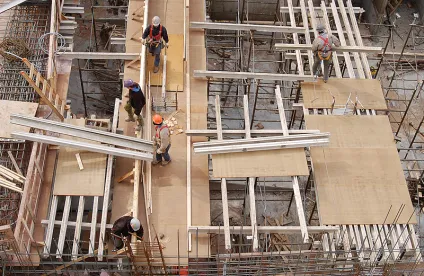Earlier this year, the New Jersey Appellate Division reversed a Bergen County trial court decision, which had dismissed a construction defect case filed by a condominium association more than six years after the condominium complex was substantially completed, but less than six years after the association received the transition engineering report identifying construction defects. Finding the Association had six years from the date of substantial completion during which to file suit, the trial court rejected the Association’s contention that the running of the limitations period was effectively tolled until after the unit owners took majority control of the Board and received a comprehensive transition engineering study identifying various construction defects. See Palisades at Fort Lee Condo. Ass’n v. 100 Old Palisade, LLC, 2016 N.J. Super. Unpub. LEXIS 193 (App. Div. Feb. 1, 2016).
In reversing the trial court, the Appellate Division recognized the application of the discovery rule in the context of condominium defects, holding that for statute of limitations purposes, the Association’s claims accrued, triggering the running of the six-year limitations period, when it received the transition report. That was the first time the unit-owner-controlled Board was “reasonably aware that it had actionable claims regarding the full range of construction defects.” The Appellate Court categorically rejected defendants’ arguments that the Association should still be time barred because at the time the transition engineering study was produced, the Association still had a reasonable time left to assert claims within six years of the date of substantial completion of the work. Appreciating the legislature’s intent to give injured plaintiffs six years to file suit, the Appellate Panel found that the statute of limitations, by its plain terms, affords a plaintiff the full limitations period to file suit after accrual of the cause of action. See N.J.S.A. 2A:14-1.
In the case of the Palisades, the Association’s cause of action accrued on June 13, 2007, the date it received the transition engineering report prepared by Falcon Engineering. As such, the Association had until June 13, 2013 to file suit for construction deficiencies in the common elements. The Association’s complaint filed in May 2009 was therefore timely, not barred by the statute of limitations, and consequently improperly dismissed by the trial court.
While it remains to be seen whether the Supreme Court will grant certification and evaluate the Appellate Court’s decision, the current state of the law is as it should be—the statute of limitations does not begin to run on an Association’s construction defect claims until the unit owners have full control of the Association’s governing Board and have sufficient facts upon which to assert claims for construction defects.
The requisite “facts” are almost always contained within a transition report prepared by engineers, who are hired by the Board, after the developer sells 75% of the units and the unit owners take majority control of the Board. For prior to then, the developer controls the Board and has no incentive to perform the engineering work and discover construction defects, the disclosure of which will undoubtedly be bad for business and have an adverse impact on sales.



 />i
/>i
